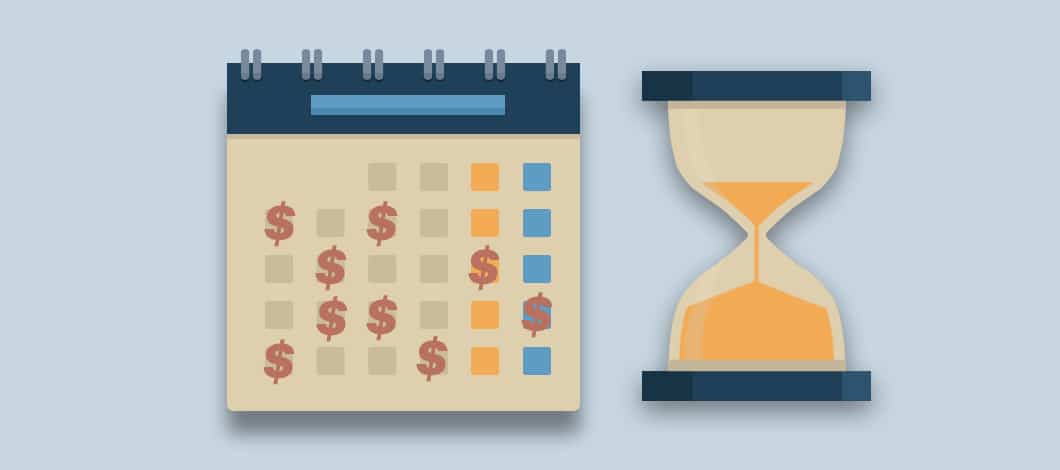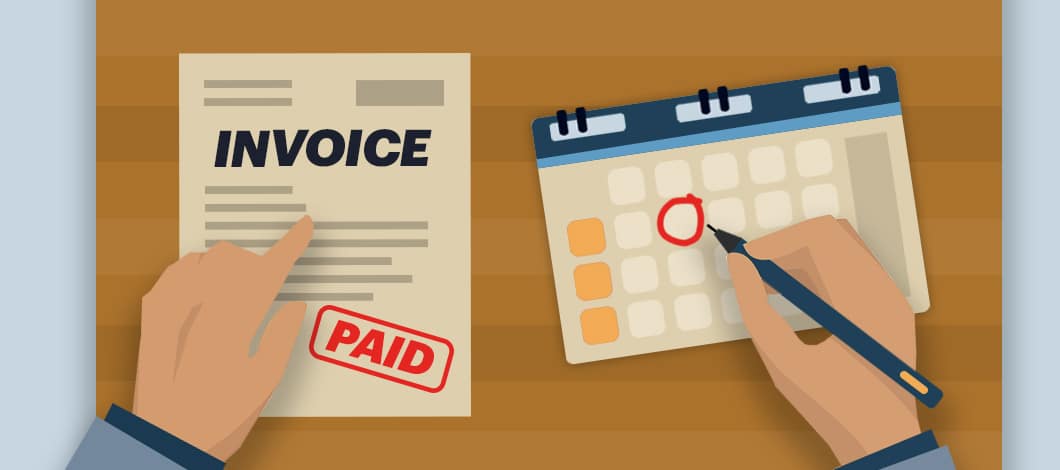The days sales outstanding (DSO) calculation provides you with vital financial information.
Learn how to compute and improve your numbers. We’ll cover what DSO is, why it’s important, how to calculate it, what a good DSO ratio is and how to manage yours.
What Is Days Sales Outstanding?
Days sales outstanding is also referred to by terms such as days receivables, days receivable outstanding, accounts receivable days formula (also known as the A/R days formula) or average collection period. It usually is defined as the average number of days it takes a business to collect money you are owed from customer purchases made on credit (accounts receivable).
More precisely, it refers to the average of how many days’ worth of sales you have yet to collect in comparison to your total sales made on credit for a given time frame. This way of measuring accounts receivable counts money you’re owed in terms of days’ worth of sales rather than dollar value.
DSO is expressed as a number by taking the average amount of money you are owed from credit sales for a given period, dividing by your total credit sales for that period and multiplying the result by the number of days in that time frame. It usually is measured monthly. However, it also can be calculated for other time frames, such as quarterly or annually.
Illustrating DSO
To take a simplified example, let’s say that at the beginning of November, you were owed $160,000 for credit sales, while at the end of November, you were owed $140,000, so on average, you were owed $150,000 over the month.
Now let’s say you made $100,000 of sales on credit during that month, which has 30 days. Your DSO at the end of November would be calculated by dividing $150,000 by $100,000, yielding 1.5, and multiplying the result by 30 days, giving you a DSO of 45 days.
In other words, at the end of November, the average amount you were owed for credit sales exceeded your credit sales by half, meaning you’re collecting money more slowly than you’re making sales. Another way of saying this is that you can expect it to take 45 days for you to collect what you make over a 30-day period if you continue collecting money at your current rate.

Why Is DSO Important for Business Operations?
DSO provides important insight into your company’s cash flow. A low DSO signals that you’re collecting a higher amount of what you’re owed. This indicates you’re collecting debts in a shorter time. A high DSO, however, means you’re collecting less of what you’re owed and it’s taking you longer to collect it.
Knowing how quickly you’re collecting money you’re owed helps you make more accurate cash-flow projections. If you know how long it takes you to collect all your sales revenue, you know how much money you have available to cover expenses. This can let you know whether you have a cash-flow gap that needs to be covered by business financing resources such as a loan or line of credit.
Tracking your DSO also provides insight into the efficiency of your billing and collection processes. A high DSO may be a sign that you need to improve your collection process to sustain your cash flow.
How Do You Do a DSO Calculation?
To calculate DSO:
- Take the average amount of credit sales you’re owed over a given time period, known as your average accounts receivable (average A/R)
- Divide it by your total credit sales over that period
- Multiply the result by the number of days in that time frame
This can be expressed in the formula:
DSO = [(Average A/R) / Total credit sales] * Days
Average A/R can be determined by taking the average of your accounts receivable at the beginning of the period and your accounts receivable at the end of the period, equivalent to the sum of your starting A/R and ending A/R divided in half.
For example, at the beginning of the month you were owed $90,000 in unpaid credit sales. A the end of the month you were owed $110,000. Your average A/R would be $200,000 divided by 2, or $100,000.
Using the DSO Formula
Let’s use this average A/R to illustrate the DSO formula in application. Let’s say your total credit sales over 30 days were $20,000. Your DSO would be:
($100,000 / $75,000) * 30 = 40
In other words, with this DSO, it’s going to take you 40 days to collect the outstanding accounts receivable you’re owed on sales made over a 30-day period.
Notice that the higher your average A/R compared to your total credit sales, the higher your DSO will be. Using the example above, if your average A/R were $200,000 instead of $100,000, you’d be dividing $200,00 by $75,000 before multiplying by 30. This gives you a DSO of 80 days. This means it’s taking you twice as long to collect accounts receivable as if your DSO were 40 days.
However, say your average A/R were $50,000 instead of $100,000. You’d be dividing $50,000 by $75,000 before multiplying by 30, giving you a DSO of 20 days. This would mean you’re collecting accounts receivable twice as fast as if your DSO were 40 days.
Other factors can influence your DSO numbers. For instance, a change in your total credit sales can influence the ratio between your average A/R and your total credit sales. An increase in sales made on credit will make your average A/R smaller in comparison to your total credit sales, lowering your DSO. A decrease in credit sales will make the ratio larger, raising your DSO.
Your accountant can help you interpret what your DSO numbers mean and which factors are affecting them.

What Is a Good DSO Ratio?
On average, a good DSO rate is considered to be less than 45 days. This means that it takes you an average of 45 days to collect sales made over a 30-day period.
So, what does that mean? You can expect the money from sales you make in a given month will be collected within 15 days of the end of the month. This keeps your cash flow a couple of weeks ahead of bills due at the end of the coming month. That enables you to sustain your operations.
This is a general guideline that can vary by industry and for individual companies. Say you work in an industry that has seasonal cycles. Sales are much heavier some months than others. Your cash-flow needs may differ and this may affect what represents an ideal DSO ratio for you.
To determine what DSO you should aim for, research the norm for your industry. Also, talk with your accountant about your cash-flow projections.
How Can You Improve DSO?
Say your calculations indicate that your DSO is higher than you need for ideal cash-flow management. You can take a number of steps to lower your numbers and collect your accounts receivable faster:
- Use a billing procedure that enables you to collect cash at the time of sale, if this is feasible for your industry
- Allow your customers multiple payment options, making it easier for them to pay
- Automate your payment and invoicing process so that invoices go out more quickly
- Improve your debt collection procedures through steps such as sending automated late payment reminders and using a debt collection agency for accounts that have gone into delinquency for a prolonged period of time
Taking these types of steps will tend to lower your DSO by speeding up your accounts receivable collection process.
Manage Your DSO to Sustain Your Cash Flow
DSO represents the average number of days it takes you to collect money you’re owed from credit sales. Knowing this helps you project your cash flow, enabling you to plan your finances accurately.
DSO is calculated by:
- Taking your average accounts receivable over a given number of days
- Dividing by your total credit sales over that time frame
- Multiplying by the number of days
Generally, 45 days represents a healthy DSO ratio, although this varies by industry and for individual companies.
You can improve your DSO ratio by taking steps such as:
- Collecting payments upfront
- Accepting multiple payment options
- Automating your payment process
- Improving your debt collection procedures
If you’re struggling with slow cash flow while you’re trying to improve your DSO numbers, consider applying for small business financing options such as accounts receivable financing, loans or lines of credit. Take a few minutes to fill out our free, no-obligation prequalifying application and find out what types of financing options may be available to you.










